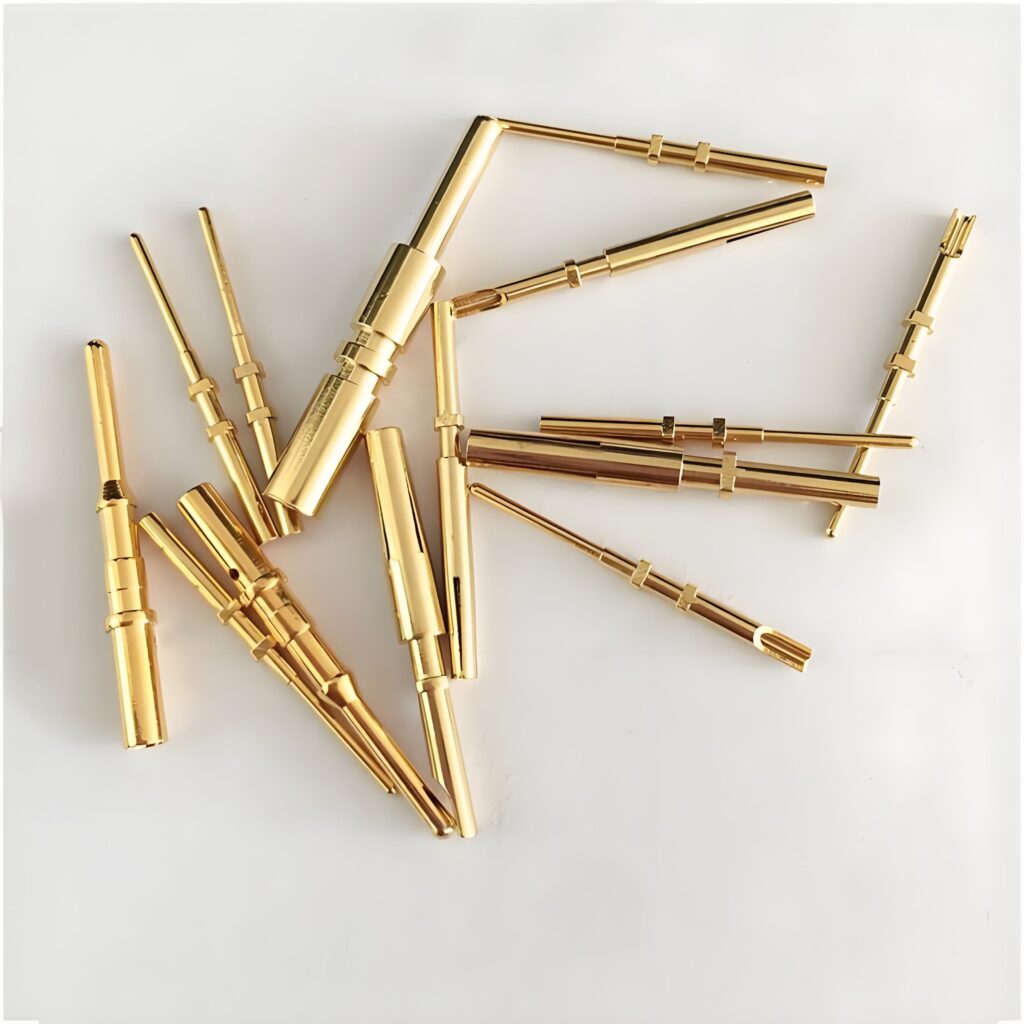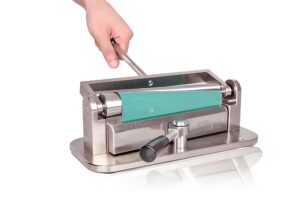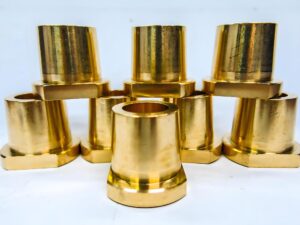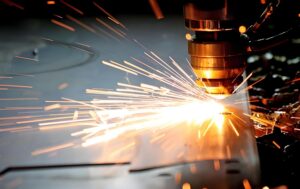Silicon bronze is more than just a copper alloy—it’s a material engineering success story. Praised for its unbeatable corrosion resistance, impressive strength, and timeless aesthetic, this versatile metal has become a cornerstone in industries ranging from marine engineering to high-end architecture. In this comprehensive guide, we’ll break down what makes silicon bronze unique, explore its key grades, highlight its most impactful applications, and explain why it’s a top choice for modern manufacturing.
What is Silicon Bronze?
Silicon bronze is a copper-based alloy defined by its blend of copper (94–96%), silicon (2.8–3.8%), and trace elements like manganese, iron, and zinc. Its name comes from the silicon additive, which transforms pure copper into a material far more durable and workable than its base metal.
For centuries, civilizations have used early forms of silicon bronze for tools, weapons, and decorative artifacts. Today, advanced machining techniques have unlocked its full potential, making it a go-to for everything from ship propellers to artistic sculptures.
Visually, silicon bronze stands out with a warm, reddish-gold hue—a sign of its high copper content. Over time, it develops a rich patina, adding character that designers and architects adore.
Chemical Composition: What Makes Silicon Bronze Tick?
The magic of silicon bronze lies in its precise mix of elements. While ratios vary slightly by grade, the core components are consistent:
| Element | Percentage Range | Role in the Alloy |
| Copper (Cu) | 94–96% | Provides base conductivity, corrosion resistance, and malleability. |
| Silicon (Si) | 2.8–3.8% | Boosts strength, improves castability, and enhances resistance to oxidation. |
| Manganese (Mn) | 0.5–1.5% | Hardens the alloy and improves wear resistance without sacrificing ductility. |
| Iron (Fe) | 0.5–1.0% | Adds structural rigidity, making the alloy suitable for load-bearing parts. |
| Zinc (Zn) | Trace amounts | Fine-tunes hardness and workability in specific grades. |
This composition creates a material that thrives in harsh environments—think saltwater, industrial chemicals, or extreme temperatures—where weaker metals would corrode or fail.
Properties of Silicon Bronze: Physical & Mechanical Strengths
Silicon bronze’s popularity stems from its rare balance of physical and mechanical properties. Let’s break them down:
Physical Properties
- Density: ~8.3 g/cm³ (heavier than aluminum, lighter than steel, making it ideal for weight-sensitive designs).
- Melting Point: 950–1000°C (1742–1832°F) – high enough to withstand extreme heat in industrial settings.
- Electrical Conductivity: Lower than pure copper but sufficient for low-voltage applications like connectors.
- Thermal Conductivity: Adequate for heat exchangers and cooling systems.
- Corrosion Resistance: Exceptional in saltwater, humidity, and chemical exposure (thanks to silicon’s oxide layer).
- Color: Warm reddish-gold, which develops a unique greenish patina over time—perfect for decorative uses.
Mechanical Properties
- Tensile Strength: 70,000–85,000 psi – strong enough to handle structural loads (comparable to mild steel).
- Yield Strength: ~40,000 psi – resists deformation under pressure.
- Elongation: 15–25% – ductile enough to be bent, formed, or stamped into complex shapes.
- Hardness: 65–100 Brinell – balances toughness with machinability.
- Machinability: Excellent – easier to cut, drill, and weld than many copper alloys (a boon for manufacturers).
This combination of strength and flexibility makes silicon bronze ideal for parts that face repeated stress, vibration, or wear—like marine fasteners or aerospace bushings.
Key Silicon Bronze Grades: Which One Should You Choose?
Not all silicon bronzes are created equal. Different grades are formulated for specific tasks, so choosing the right one is critical. Here are the most common:
C65500 (High Silicon Bronze “A”)
- Composition: 96% copper, 3% silicon, trace manganese/iron.
- Best For: Marine hardware, architectural fixtures, and fasteners.
- Why It Shines: Offers the highest corrosion resistance in saltwater—perfect for propeller shafts, deck fittings, and underwater bolts. Its strength and workability also make it a favorite for outdoor sculptures.
C65100
- Composition: Slightly higher manganese (up to 1.5%) than C65500.
- Best For: Industrial gears, aerospace components, and high-stress machinery.
- Why It Shines: Boasts better wear resistance and machinability than C65500, making it ideal for precision parts like bearings and valve stems.
C66100
- Composition: Balanced copper, silicon, and iron for formability.
- Best For: Intricate castings, electrical connectors, and decorative metalwork.
- Why It Shines: Excels at being shaped into complex designs—think curved architectural panels or detailed jewelry—without losing strength.
C64800
- Composition: Includes small amounts of tin for improved castability.
- Best For: Plumbing valves, fittings, and low-pressure hydraulic components.
- Why It Shines: Easy to pour into molds, making it cost-effective for mass-produced parts like faucet handles or pipe connectors.
Applications: Where Silicon Bronze Excels

Silicon bronze’s versatility shines across industries. Here are its most impactful uses:
Marine & Offshore
- Propeller shafts and seawater pumps: Resist saltwater corrosion better than stainless steel.
- Deck hardware (cleats, hinges, bolts): Withstand harsh ocean conditions for decades.
- Subsea connectors: Perform reliably in deepwater environments.
Architecture & Design
- Window frames and door hardware: Develop a beautiful patina that ages gracefully.
- Public sculptures and monuments: Maintain structural integrity in outdoor settings.
- Facade panels: Add a warm, metallic contrast to modern buildings.
Electrical & Electronics
- Electrical connectors and terminals: Conduct electricity well enough for low-voltage systems.
- Contact clips: Resist wear from repeated plugging/unplugging.
- Non-magnetic components: Ideal for MRI machines or sensitive equipment.
Automotive & Aerospace
- Bearings and bushings: Reduce friction in engines and landing gear.
- Valve guides and fuel system parts: Withstand high temperatures and chemical exposure.
Art & Craft
- Jewelry and sculpture: Cast into intricate shapes and accept custom patinas (e.g., green, brown, or blue).
- Musical instruments: Used in brass instrument valves for smooth operation and rich tone.
Advantages and Disadvantages of Silicon Bronze
Advantages
- Unbeatable Corrosion Resistance: Outlasts brass, aluminum, and even some steels in harsh environments.
- Strength & Ductility: Handles heavy loads while remaining flexible enough to avoid cracking.
- Aesthetic Appeal: Its color and patina make it a designer favorite for both functional and decorative parts.
- Non-Magnetic: Critical for medical devices, aerospace tools, and electronics.
- Recyclable: 100% recyclable, aligning with sustainability goals.
Disadvantages
- Higher Cost: More expensive than brass or aluminum (but cheaper than bronze alloys with high tin content).
- Lower Electrical Conductivity: Not ideal for high-voltage applications (use pure copper instead).
- Work Hardening: Can become brittle if overworked—requires annealing (heat treatment) to restore ductility.
The Future of Silicon Bronze
As industries prioritize durability and sustainability, silicon bronze is gaining ground in:
- Renewable energy: Wind turbine components and solar panel mounting hardware.
- Green construction: Low-maintenance, long-lasting building materials.
- Electric vehicles: Corrosion-resistant parts for battery systems and charging infrastructure.
Partner with Experts for Precision Machining
To fully leverage silicon bronze’s potential, you need a manufacturing partner with expertise in machining this unique alloy. At Precionn, we specialize in crafting custom silicon bronze components—from prototypes to large-scale production—with:
- Tight tolerances (±0.001″) for critical applications.
- Custom surface finishes (polished, brushed, or patinated).
- Compliance with ASTM B584 (the standard for copper-silicon alloys).
Based in Shenzhen, China, we serve global clients in marine, aerospace, and architecture. Whether you need a single sculpture part or 10,000 marine bolts, we deliver quality you can trust.



